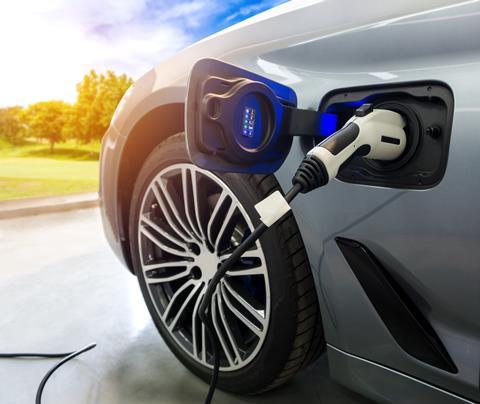President Biden signed a wide-ranging $750 billion health care, tax and climate bill into law on August 16 this year. Of the overall figure included in the Inflation Reduction Act (IRA), $369 billion is directed at energy security and climate change.
The act aims to work as an incentive for companies, including those in the automotive industry, to switch to clean energy and help reduce greenhouse gas emissions by 40% compared to 2005 levels.

In terms of automotive, the act provides incentives, including tax credits on the ticket price of a new EV, designed to stimulate greater consumer take up. It also promotes domestic zero-emission vehicle manufacturing. The IRA promotes local production of both vehicle and lithium batteries, including domestic supply of battery materials.
US vehicle makers welcome the tax credit incentives, equal to a maximum of $7,500 for vehicles that comply with rules on local content. They also welcome the various supply chain incentives designed to encourage localised production of EVs and battery materials. The aim of localising production of EVs and batteries is something US-based carmakers have already collectively invested $100m toward.
Compromised content
However, carmakers are also critical that a sizeable proportion of their EV investments could be compromised by new rules governing eligibility for tax credits.
That is because the material, component and assembly requirements governing eligibility for credits actually disqualifies a high number of EVs from the purchasing incentive. The Clean Vehicle Credit part of the act stipulates that only those vehicles with final assembly in North America qualify. That is effective immediately, with the result that far fewer vehicles sold from August 17 to the end of calendar year 2022 will be eligible for the existing credit.
Stellantis said the new programme immediately limits eligibility to vehicles assembled in North America.
“Our line up of eligible vehicles – the Chrysler Pacifica hybrid, Jeep Wrangler 4xe and Jeep Grand Cherokee 4xe – is included in this group,” said a spokesperson for the carmaker. “The US Treasury Secretary is expected to issue proposed guidance regarding the program’s application. Stellantis will advise its dealers accordingly.”
Enormous transformation
Existing supply chains supporting EVs sold in the US are still international, that includes importing finished EVs. The US does not yet have the required material supply and infrastructure in place in the US to simultaneously meet demand and comply with the strict rules in the new act.
That was something highlighted by one of the sector’s representative bodies, the Alliance for Automotive Innovation (AAI). It said the IRA was, in itself, a recognition of the enormity of the transformation facing the automotive industry.
“Automakers have already invested more than $100 billion in vehicle electrification – expanding the production of EVs inside the United States and across North America and locating raw material and battery components on American soil,” said John Bozzella, president and CEO of AAI, in a statement after the signing of the act.
However, Bozella pointed out that requirements of the legislation’s purchase incentive disqualified 70% of the EVs currently sold in the US (including plug-in hybrid and fuel cell options). Furthermore, he said that none would qualify for full EV tax credit when additional sourcing requirements go into effect.
Eligibility for production
As mentioned, the IRA aims to secure the US EV supply chain and puts stringent eligibility limits based on where battery components are manufactured or where the underlying critical minerals are processed or mined.
According to Bozella, there needs to a more gradual introduction of the legislative requirements for battery component, critical mineral and final assembly requirements. Without it, the EVs currently made and sold in the US will not qualify.
Jennifer Safavian, president and CEO of Autos Drive America, another group representing OEMs in the US, concurred. Ahead of the signing of the act she said it would “take time for automakers to transition supply chains to meet the sourcing requirements in the Inflation Reduction Act and be able to provide consumers with a broad array of vehicles to meet their needs.”
Safavian went on to say that the US Congress did not recognise the necessity of working with all parties as supply chains were being developed within the North American region. She went further and said international allies in Europe and South Korea had already raised concerns that the Clean Vehicle Credit may violate international trade rules.
Congress has made some meaningful investments on the supply side. There is more than $15.5 billion in incentives and grants to ensure the US is building automotive supply chains and a globally competitive battery manufacturing platform. Over the long haul, that’s going to be essential to making the widest range of EVs available to millions of additional drivers in all corners of the country.
However, Safavian said for the moment, the act was limiting that range. “At a time when countries and industry are investing together towards more resilient supply chains, we should not limit the partners that can help advance the transition towards cleaner transportation,” said Safavian.
Look out for further discussion of the impact of the IRA on EV production and supply in the US in the forthcoming autumn digital edition of Automotive Logistics and Finished Vehicle Logistics magazine

























![Global[1]](https://d3n5uof8vony13.cloudfront.net/Pictures/web/a/d/s/global1_726550.svgz)














No comments yet